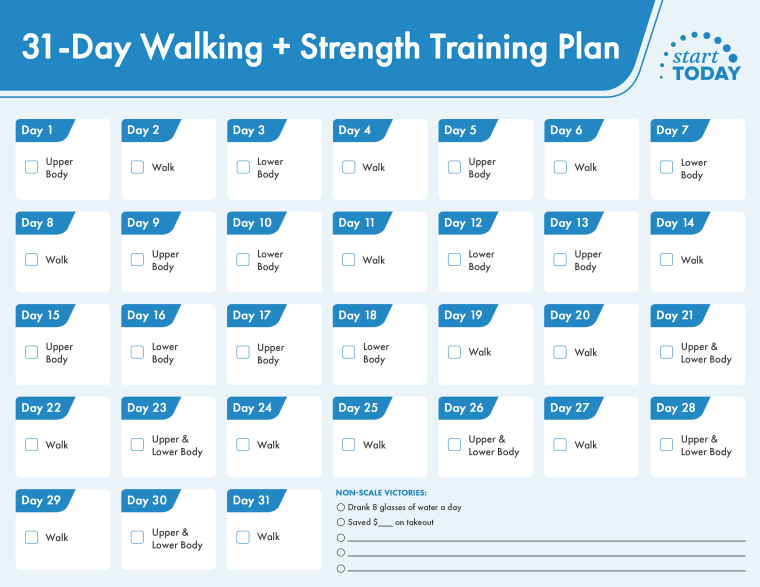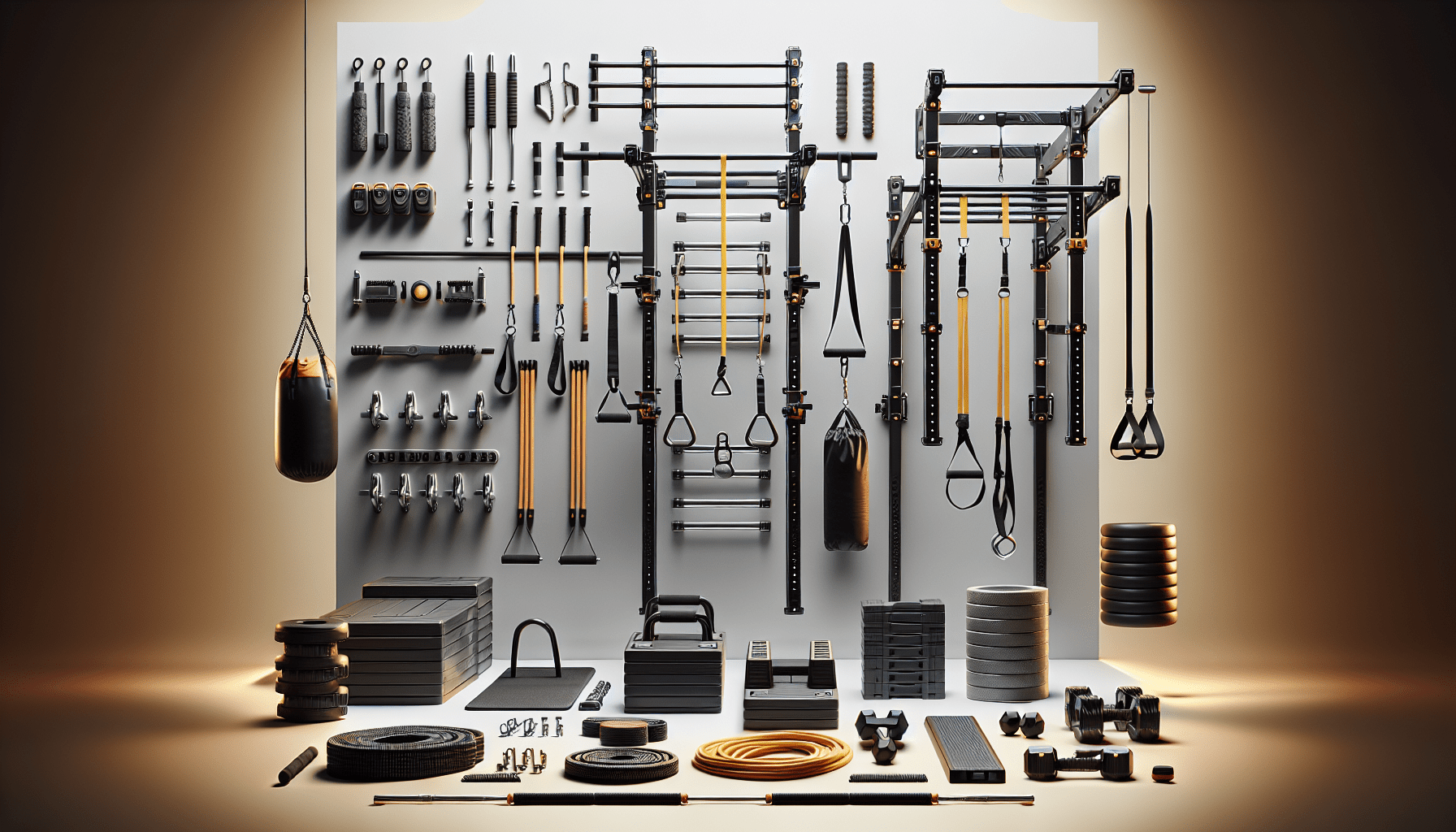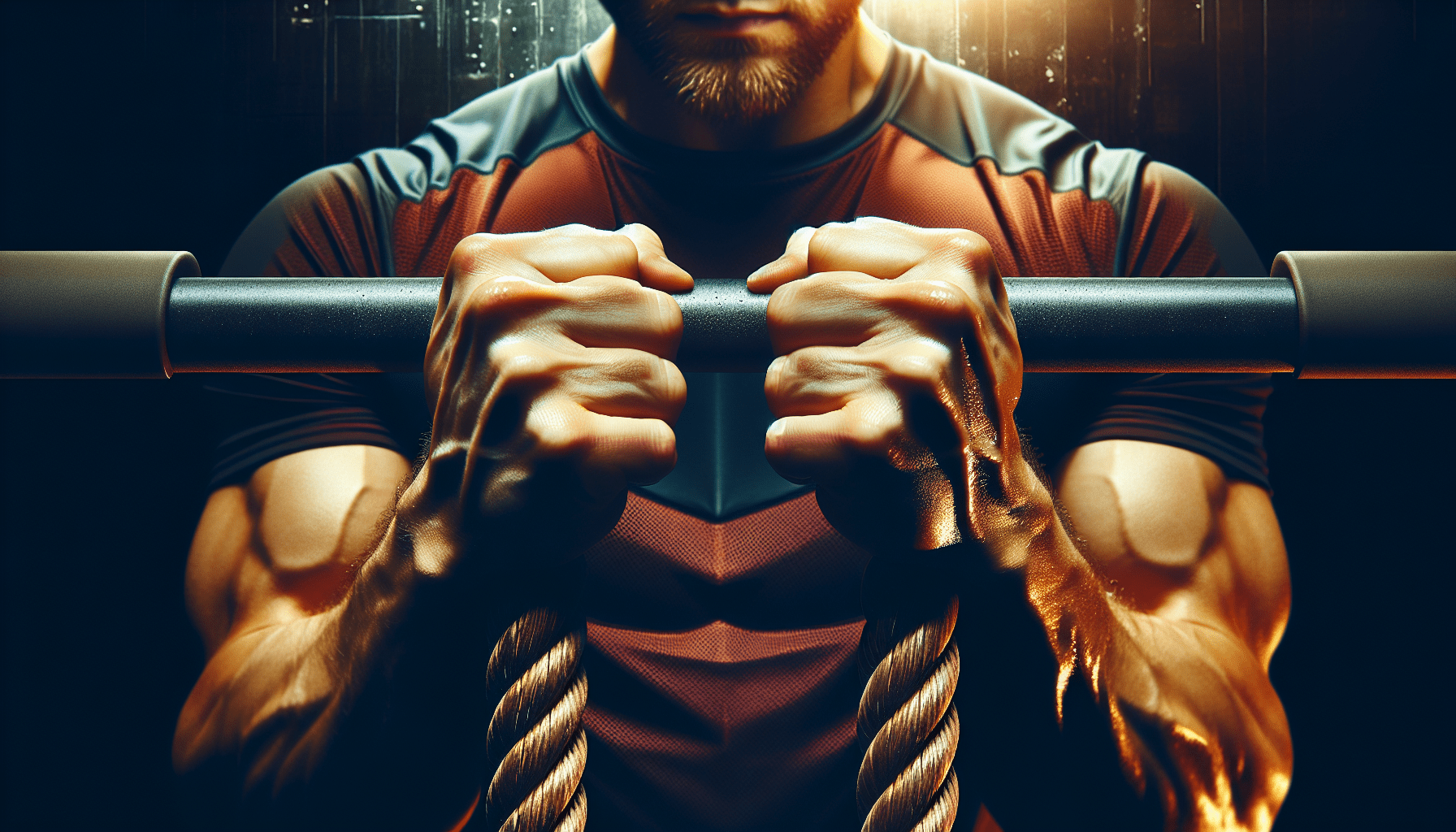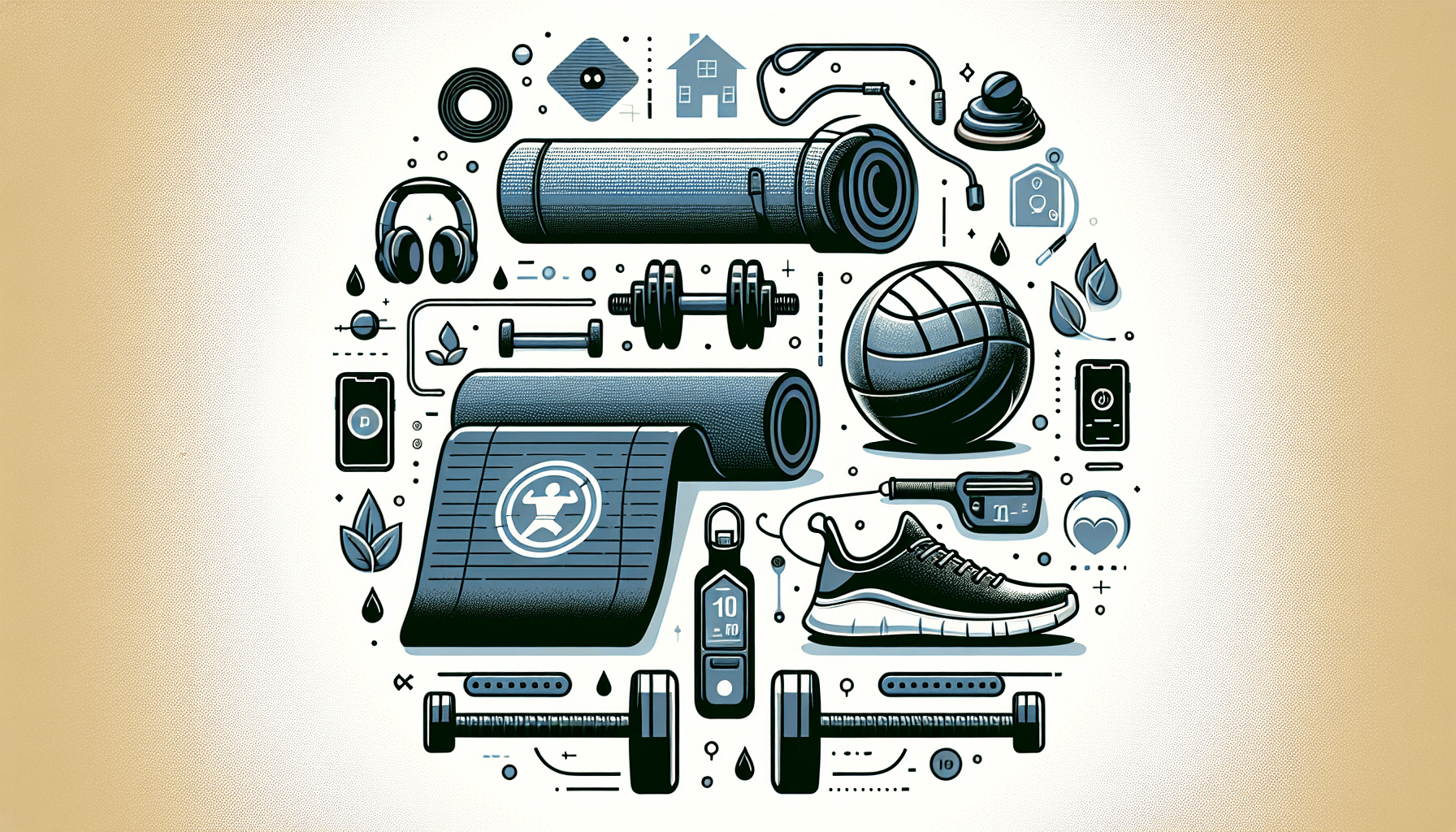Are you looking to build strength and tone your muscles? Look no further! In this article, we will explore a wide range of the best strength training exercises that will help you achieve your fitness goals. Whether you are a beginner or an experienced gym-goer, these exercises will target all major muscle groups, giving you the results you desire. So grab your workout gear and get ready to discover the most effective ways to amp up your strength training routine!

This image is property of hips.hearstapps.com.
Compound Lifts
Barbell Squats
Barbell squats are one of the most effective compound exercises that you can incorporate into your strength training routine. This exercise primarily targets your lower body, particularly your quadriceps, hamstrings, and glutes. To perform the barbell squat, you stand with your feet shoulder-width apart, positioning the barbell across your upper back. As you squat down, keeping your back straight and your chest lifted, you engage your leg muscles to lower yourself until your thighs are parallel to the ground. You then push through your heels to return to the starting position. Barbell squats not only build strength in your lower body but also engage your core muscles, promoting overall stability and balance.
Deadlifts
Deadlifts are another compound exercise that ranks high on the list of strength training exercises. This exercise targets numerous muscle groups, including your hamstrings, glutes, lower back, and core. To perform a deadlift, you start with the barbell on the ground, standing with your feet hip-width apart. You then bend at the hips and knees while keeping your back straight to grip the barbell with both hands. Engaging your lower body and core, you lift the barbell by straightening your legs and extending your hips until you are standing upright. Deadlifts not only build raw strength and power but also improve your posture and enhance functional movements in your everyday life.
Bench Press
The bench press is a compound exercise that primarily targets your chest muscles, specifically the pectoralis major and minor. Additionally, it engages your shoulders, triceps, and even your core for stabilization. To perform the bench press, lie flat on a bench with your feet firmly on the ground and grip the barbell slightly wider than shoulder-width apart. Lower the barbell down towards your chest, keeping your elbows at a 45-degree angle from your body. Then, push the barbell back up to the starting position by extending your arms fully. Bench press not only helps you build strength and increase muscle mass in your upper body but also enhances your pushing movements.
Overhead Press
The overhead press, also known as the shoulder press, targets your shoulder muscles, particularly the deltoids. It also engages your triceps and core for stability. To perform the overhead press, start by holding a barbell at shoulder height with your palms facing forward. Press the barbell upwards until your arms are fully extended overhead, while keeping your core engaged to maintain balance. Lower the barbell back down to shoulder height and repeat the movement. Overhead press not only helps you develop strong and defined shoulders but also improves your overall upper body strength and stability.
Isolation Exercises
Bicep Curls
Bicep curls are one of the most common isolation exercises for targeting the biceps, the muscles on the front of your upper arm. To perform a bicep curl, stand with a dumbbell in each hand, with your palms facing forward and your elbows tucked at your sides. Slowly lift the dumbbells towards your shoulders by bending your elbows, contracting your biceps. Hold the position for a moment and then lower the dumbbells back down to the starting position. Bicep curls help you strengthen and tone your biceps, enhancing both the appearance and functionality of your arms.
Tricep Extensions
Tricep extensions isolate and target the muscles on the back of your upper arm, the triceps. This exercise can be performed with dumbbells, a barbell, or a cable machine. To do a tricep extension with dumbbells, hold a dumbbell in both hands and raise it above your head, fully extending your arms. Slowly bend your elbows, lowering the dumbbell behind your head until your forearms are parallel to the floor. Straighten your arms back up to the starting position and repeat the movement. Tricep extensions help you sculpt and strengthen your triceps, contributing to a well-rounded upper body.
Lateral Raises
Lateral raises are an isolation exercise that primarily targets your shoulder muscles, particularly the deltoids. This exercise can be performed using dumbbells or resistance bands. To do a lateral raise with dumbbells, stand with a dumbbell in each hand, with your palms facing your thighs. Lift both arms out to the sides until they are parallel to the ground, maintaining a slight bend in your elbows. Hold the position for a moment and then slowly lower your arms back down to your sides. Lateral raises not only help you build strength and definition in your shoulders but also improve your overall shoulder stability.
Leg Curls
Leg curls isolate and target the muscles at the back of your thighs, known as the hamstrings. This exercise can be performed using a leg curl machine or a stability ball. To perform leg curls on a leg curl machine, lie face down on the machine with your legs extended. Curl your legs up towards your glutes by contracting your hamstrings, then slowly lower them back down to the starting position. Leg curls help you strengthen and tone your hamstrings, contributing to balanced leg development and improved athletic performance.
Lower Body Exercises
Barbell Squats
Barbell squats are not only a compound exercise but also an effective lower body exercise. In addition to targeting your quadriceps, hamstrings, and glutes, barbell squats also engage your calf muscles. The movement of barbell squats helps to improve your lower body strength, muscular endurance, and overall power. It also stimulates your core muscles as you stabilize the weight. Adding barbell squats to your routine can increase your functional strength, promote better balance, and enhance your athletic performance.
Deadlifts
Deadlifts, as mentioned earlier, are not only a compound exercise but also an excellent lower body exercise. They primarily engage your hamstrings, glutes, and lower back, while also activating your quadriceps and calf muscles. Deadlifts place a significant emphasis on your posterior chain muscles, which are crucial for maintaining good posture and optimal lower body strength. Incorporating deadlifts into your workout routine will not only develop these major muscle groups but also improve your overall lower body stability and resilience.
Lunges
Lunges are a versatile lower body exercise that targets your quadriceps, hamstrings, and glutes, as well as engaging your calf muscles and core for stability. To perform a lunge, stand with your feet hip-width apart. Take a step forward with one foot, lowering your body until both knees are bent at a 90-degree angle. Push through your front heel to return to the starting position and repeat on the other leg. Lunges can be done with bodyweight, dumbbells, or a barbell. Incorporating lunges into your routine helps to develop balanced lower body strength, improve your agility, and enhance your overall lower body endurance.
Glute Bridges
Glute bridges specifically target your glute muscles. They can be performed with or without weight. To do a glute bridge, lie flat on your back with your knees bent and feet flat on the ground. Lift your hips up towards the ceiling, squeezing your glutes at the top of the movement, and then lower back down to the starting position. Glute bridges activate your glute muscles and help strengthen them, enhancing your overall lower body power, stability, and the appearance of your backside.
Upper Body Exercises
Bench Press
As previously mentioned, the bench press is a compound exercise that primarily targets your chest muscles, but it also activates your shoulders and triceps. It is a staple exercise in building upper body strength and muscle mass. The bench press can be performed with a barbell or dumbbells. By incorporating the bench press into your workout routine, you can build a stronger and more defined chest, as well as develop functional upper body strength for pushing movements.
Overhead Press
The overhead press, discussed earlier as a compound exercise, is an effective upper body exercise that specifically targets your shoulder muscles. It also engages your triceps and core for stability. By performing the overhead press, you can develop strong and defined shoulder muscles, improve shoulder stability, and enhance your overall upper body strength.
Pull-ups
Pull-ups are a challenging bodyweight exercise that targets your back muscles, primarily the latissimus dorsi, as well as engaging your biceps and shoulders. To perform a pull-up, grab a pull-up bar with an overhand grip, palms facing away from you, and hands slightly wider than shoulder-width apart. Hang from the bar with your arms fully extended, then pull yourself up by engaging your back muscles until your chin reaches or clears the bar. Slowly lower yourself back down to the starting position and repeat the movement. Pull-ups are a great exercise to develop upper body strength, especially in your back, and enhance your pulling movements.
Rows
Rows are an effective upper body exercise that targets your back muscles, primarily the rhomboids and upper trapezius. They can be performed with dumbbells, a barbell, or a cable machine. To perform a row, stand with a dumbbell in each hand or a barbell in front of you, hinge at the hips maintaining a flat back, and slightly bend your knees. While keeping your core engaged, pull the weights or barbell up towards your waist, squeezing your shoulder blades together. Slowly lower the weights or barbell back down to the starting position and repeat the movement. Rows help strengthen and tone your back muscles, promoting good posture and overall upper body strength.

This image is property of www.nourishmovelove.com.
Core Exercises
Plank
The plank is an isometric exercise that targets and activates the muscles in your core, including the rectus abdominis, transversus abdominis, and obliques. To perform a plank, start in a push-up position, then lower yourself onto your forearms, keeping your elbows directly beneath your shoulders. Maintain a straight line from your head to your heels, engaging your core and glutes. Hold this position for a specific duration of time, keeping your abdominal muscles tight. Planks are an essential exercise for strengthening your core, improving your stability, and supporting good posture.
Russian Twists
Russian twists are an effective exercise for engaging your core muscles, particularly the obliques. To perform Russian twists, sit on the floor with your knees bent and feet raised slightly off the ground. Lean back slightly while keeping your back straight. Holding a weight or medicine ball in front of you, rotate your torso from side to side, touching the weight or ball to the ground on each side. Russian twists help strengthen and define your oblique muscles, improving your ability to rotate and stabilize your core.
Hanging Leg Raises
Hanging leg raises are an advanced exercise that targets your lower abs and hip flexors. To perform hanging leg raises, hang from a pull-up bar with your arms fully extended and your legs straight. Engaging your core, lift your legs up until they are parallel to the ground, then slowly lower them back down to the starting position. This exercise helps to build strength and definition in your lower abdominal muscles, promoting better posture and overall core stability.
Supermans
Supermans are an effective exercise for strengthening the muscles in your lower back and glutes. To perform Supermans, lie facedown on the floor with your arms extended in front of you and your legs straight. Simultaneously lift your arms, chest, and legs off the ground as high as you can while keeping your abdominal muscles engaged. Hold this position for a moment and then slowly lower yourself back down to the starting position. Supermans target your back extensors and glute muscles, helping you develop a strong and resilient lower back.
Functional Exercises
Squat Jumps
Squat jumps are a plyometric exercise that engages multiple muscle groups, including your quadriceps, hamstrings, glutes, and calves. To perform squat jumps, start with your feet shoulder-width apart, then lower yourself into a squat position. Explosively jump up and extend your legs fully, then land softly back into the squat position. Squat jumps improve your lower body power, explosiveness, and agility, making them a great addition to any functional training routine.
Medicine Ball Slams
Medicine ball slams are an excellent exercise for developing upper body power and explosive strength. To perform medicine ball slams, stand with your feet shoulder-width apart, holding a medicine ball above your head with both hands. Engage your core, then slam the medicine ball down onto the ground with as much force as possible. Catch the ball as it bounces back up and repeat the movement. Medicine ball slams not only improve your overall power and coordination but also provide an excellent cardiovascular workout.
Kettlebell Swings
Kettlebell swings are a functional exercise that targets your glutes, hamstrings, and shoulders while also engaging your core and lower back muscles. To perform kettlebell swings, stand with your feet hip-width apart, holding a kettlebell with both hands in front of you. Hinge at the hips, keeping your back straight, and swing the kettlebell between your legs. As you stand up explosively, using the power of your lower body and core, swing the kettlebell up to shoulder height. Allow the kettlebell to swing back down between your legs, and repeat the movement. Kettlebell swings are an effective exercise for improving your posterior chain strength, enhancing your athletic performance, and developing explosive power.
Battle Rope Exercises
Battle rope exercises are a dynamic and challenging way to engage your upper body, core, and cardiovascular system. Holding one end of a battle rope in each hand, anchor the other end of the rope to a sturdy object. Stand with your feet shoulder-width apart and knees slightly bent. With an alternating or simultaneous movement, vigorously move your arms up and down to create waves in the rope. Battle rope exercises can be used to improve your upper body endurance, coordination, and strength, while also providing an intense full-body workout.

This image is property of fitnessprogramer.com.
Weighted Exercises
Weighted Squats
Weighted squats, as previously mentioned, are an effective lower body exercise that can be performed with dumbbells, a barbell, or a kettlebell. By adding additional weight, such as holding dumbbells by your sides or placing a barbell across your upper back, you increase the intensity and resistance of the squat movement. This helps to stimulate muscle growth and build strength in your quadriceps, hamstrings, and glutes. Weighted squats are an ideal exercise for those looking to challenge themselves and progress in their strength training journey.
Weighted Lunges
Weighted lunges are a progression of bodyweight lunges that involve holding weights, such as dumbbells, in each hand. By doing so, you increase the resistance and intensity of the exercise, helping you develop stronger and more defined leg muscles. Weighted lunges primarily target your quadriceps, hamstrings, and glutes, while also engaging your calf muscles and core for stability. Incorporating weighted lunges into your routine can help you build greater lower body strength and enhance your overall muscular endurance.
Weighted Step-ups
Weighted step-ups are another lower body exercise that involves adding resistance to the movement by holding weights, such as dumbbells, in each hand. To perform weighted step-ups, place one foot onto a bench, step, or box with the other foot planted firmly on the ground. Push through your front heel and step up onto the elevated surface, then lower yourself back down under control. Weighted step-ups primarily target your quadriceps, hamstrings, and glutes, while also engaging your calf muscles and core for stability. This exercise is an excellent way to develop unilateral leg strength, improve balance, and increase overall lower body power.
Weighted Push-ups
Weighted push-ups are a challenging variation of the classic bodyweight exercise that increases the resistance and intensity of the movement. By placing a weight plate or wearing a weighted vest on your back, you add extra load to your chest, shoulders, and triceps. To perform weighted push-ups, assume a push-up position with your hands slightly wider than shoulder-width apart. Lower your body until your chest is just above the ground, then push yourself back up to the starting position. Weighted push-ups are an effective exercise for building chest and upper body strength, while also engaging your core for stability.
Bodyweight Exercises
Push-ups
Push-ups are a classic bodyweight exercise that targets your chest, shoulders, and triceps, while also engaging your core and glutes for stability. To perform a push-up, start in a plank position with your hands shoulder-width apart and your toes on the ground. Lower your chest towards the ground by bending your elbows while keeping your body in a straight line, then push back up to the starting position. Push-ups help to build upper body strength, improve muscular endurance, and contribute to better overall functional fitness.
Pull-ups
Pull-ups, mentioned earlier as an upper body exercise, are an excellent bodyweight exercise for building upper body strength. By gripping a pull-up bar with an overhand grip and pulling your body up, you primarily engage your back muscles, along with your biceps and shoulders. Pull-ups are a challenging exercise that requires both strength and control, making them ideal for those looking to improve their upper body strength and develop a V-shaped back.
Squats
Squats are a fundamental bodyweight exercise that targets multiple muscle groups in your lower body, including your quadriceps, hamstrings, glutes, and calves. To perform a bodyweight squat, stand with your feet shoulder-width apart, lower your body by bending your knees and pushing your hips back, keeping your chest lifted and your back straight. Squats not only develop lower body strength but also improve your mobility, balance, and overall functional movement patterns.
Plank
As discussed earlier as a core exercise, planks are a versatile bodyweight exercise that primarily engage your core muscles while also targeting your shoulders, glutes, and legs. This exercise can be performed with your hands extended or resting on your forearms. The plank position requires you to hold your body in a straight line, engaging your core and glutes while maintaining proper spinal alignment. Planks help you develop a strong and stable core, enhancing your overall posture, balance, and functional movement patterns.

This image is property of media-cldnry.s-nbcnews.com.
Resistance Band Exercises
Banded Lateral Walks
Banded lateral walks are a resistance band exercise that targets your gluteus medius and hip abductor muscles. To perform banded lateral walks, place a resistance band around your lower legs, just above your ankles. Assume a partial squat position with your feet shoulder-width apart. Step to the side while maintaining tension on the resistance band, then bring your other foot closer to the original starting position. Continue stepping sideways for a set distance or number of repetitions. Banded lateral walks help activate and strengthen your hip abductor muscles, which can improve your stability, balance, and overall lower body performance.
Banded Glute Bridges
Banded glute bridges are a variation of the traditional glute bridge exercise, incorporating a resistance band for added resistance. To perform banded glute bridges, place a resistance band just above your knees and lie flat on your back with your knees bent and feet flat on the ground. Engage your glutes and lift your hips towards the ceiling, maintaining the tension on the resistance band throughout the movement. Hold the top position briefly and then lower your hips back down to the starting position. Banded glute bridges target your gluteus maximus, as well as your hamstrings and core, promoting better hip extension and overall lower body strength.
Banded Rows
Banded rows are a resistance band exercise that specifically targets your back muscles, primarily the muscles in your upper back and shoulders. To perform banded rows, anchor the resistance band to a sturdy object at chest height and hold the other end with both hands. Take a few steps back to create tension in the band, then retract your shoulder blades and pull the band towards your chest, bending your elbows. Slowly return to the starting position and repeat the movement. Banded rows help strengthen your upper back muscles, improve your posture, and enhance your pulling movements.
Banded Chest Flies
Banded chest flies are an effective resistance band exercise for targeting your chest muscles, specifically the pectoralis major. To perform banded chest flies, anchor the resistance band to a sturdy object at chest height and hold the other end with both hands, standing with your back to the anchor point. Step forward to create tension in the band, then extend your arms out to the sides, maintaining a slight bend in your elbows. Bring your hands together in front of your chest, feeling the contraction in your chest muscles. Slowly return to the starting position and repeat the movement. Banded chest flies are an excellent exercise for building strength and definition in your chest, enhancing your pushing movements, and providing an alternative to using free weights or machines.
By incorporating these strength training exercises, you can target various muscle groups, improve your overall strength, enhance your functional movement patterns, and even benefit your cardiovascular health. Remember to consult a fitness professional or ensure you are using proper form when performing these exercises to maximize their effectiveness and minimize the risk of injury. So start incorporating these exercises into your routine and enjoy the benefits of a stronger and healthier body.




